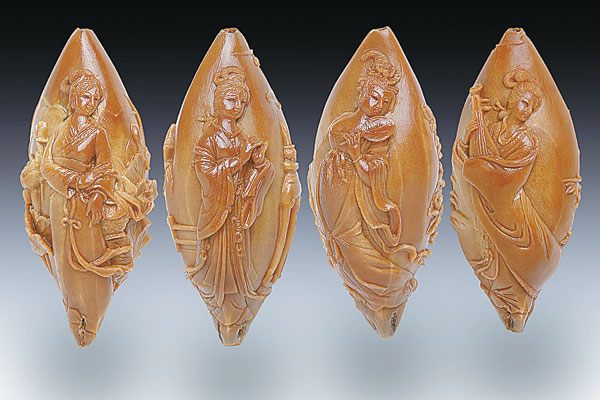

Four Ancient Beauties kernel carving by Lu Xiaoqin. Provided To China Daily
In a refined kernel-carving shop at China Artwork City in Guangfu, Xu Zhongying is busy receiving customers from home and abroad. Some of them would like to pay hundreds of thousands dollars for her work, but few of them know Xu almost gave up the skills in her 20s.
"When I became a worker in a local kernel-carving factory, I could barely made a living with the meager salary, as few people would buy 'an entertaining thing' in the 1970s," recalls Xu, now 57.
Kernel carving, known as hediao in Chinese, is a traditional micro-sculpture made from the kernel of olive, peach or walnut. Guangfu, a town in Suzhouof East China's Jiangsu province, is famous for olive-kernel carving.
"I was always confident with my skills. Fortunately, more and more people have begun to appreciate this folk art," Xu says.
Kernel carving's earliest record dates back to the Song Dynasty (960-1279) and it prospered in the Ming Dynasty (1368-1644). The ancient craftsmen displayed their consummate skills on kernels less than 5 cm long, on which human figures, animals, landscapes and even some lines of poems were carved.
After some hard years, kernel carving regained its popularity around 2008, when it was put onto the National Intangible Cultural Heritage list. Artists now mull innovations in the art and how to keep the town's specialty from disappearing.
Italian artworks to be displayed in Taipei
May 07 2013Artworks of Ming Dynasty's painter exhibited in Suzhou
Nov 07 2012Chinese artworks highlight HK auction
Oct 11 2012Copyright ©1999-2018
Chinanews.com. All rights reserved.
Reproduction in whole or in part without permission is prohibited.